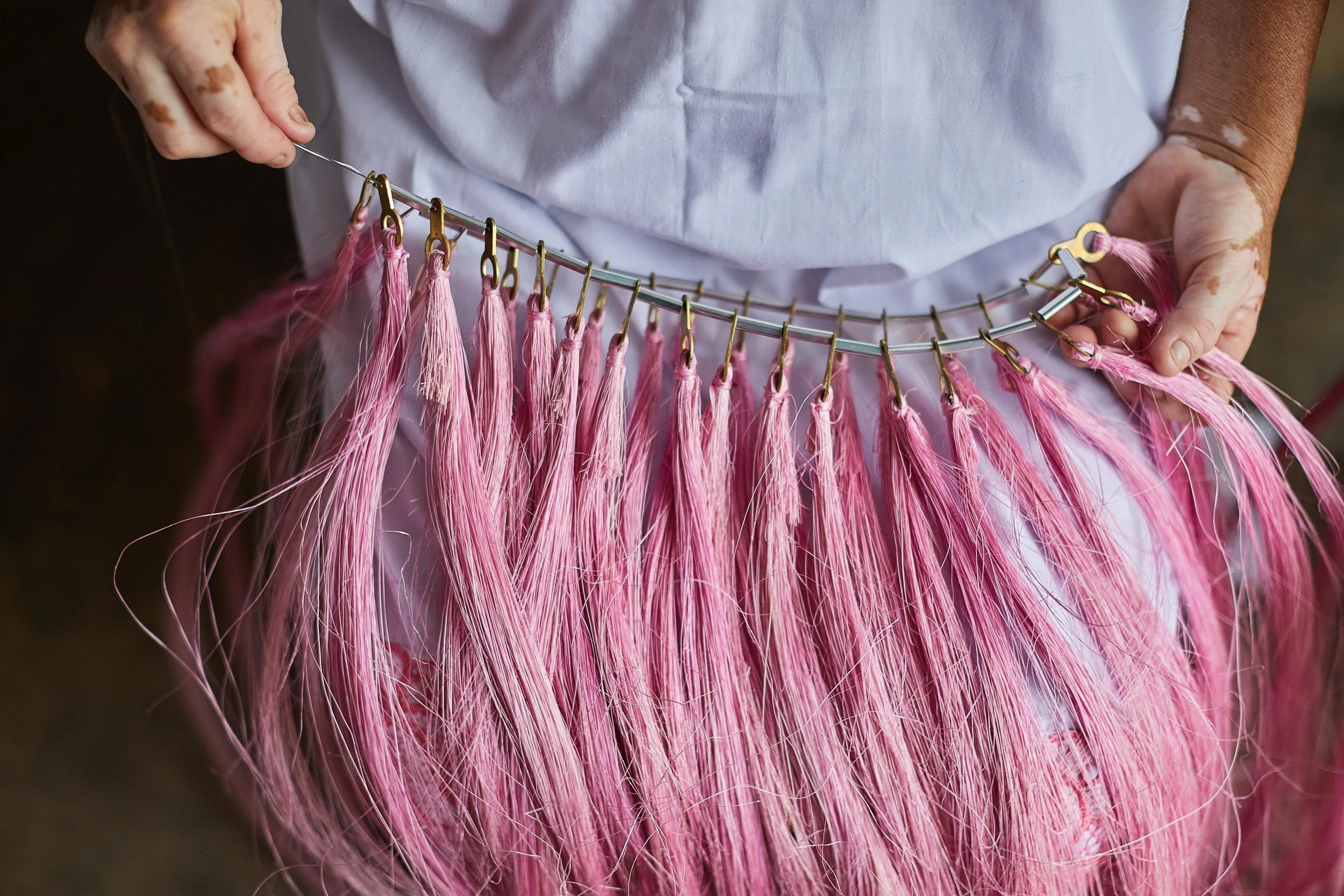AGAVE FIBER (SISAL)
A natural fibre harvested from a species of Agave cactus found in the South of Mexico. By scraping their leaves you can produce a fine yet hardy material called sisal.
In the 1990s everything changed in the Mexican village of Tonahuixtla. Their land was devastated and soil eroded. A once fertile place became inhospitable for plants and jagged rocks covered the countryside.
All of this was a direct result of the 1994 North American Free Trade Agreement and subsequent arrival of agrochemicals. For centuries before this, people in the area used the traditional milpa system - planting beans, squash and corn in concert with each other. This holy trinity not only sequestered nitrogen in the soil, but also prevented erosion. But when modern herbicides came to Tonahuixtla in the 90s, the milpa system was abandoned and the soil disintegrated.
With the land in tatters, the town eventually introduced an initiative harnessing the regenerative superpowers of agave. The succulent was planted alongside trenches in order to slow the flow of water during the wet season, thereby holding the top soil in place. Agaves are also known as ´pioneering´ plants, which means they are able to flourish with little water and soil and eventually invite other plants to grow nearby them. Since 2015, tens of thousands of agaves have been established in Tonahuixtla’s mountains. The landscape has been revolutionised from an arid vista of rocks to an abundance of desert flora.
Initially this project was funded by the government, but is now supported by the design work of Fernando Laposse. This is because of another capacity of agave. Hidden under the thorny exterior of the leaves are fibres; by merely scraping the leaves you can obtain this material called sisal. Traditionally, sisal was woven and twisted into strings, nets and ropes. But Fernando saw another opportunity with Tonahuixtla´s agaves: to use a simple knotting system that showcases the fibre in its raw state. That is, unwoven and flowing like the hair of a horse. Fernando has used his unique take on sisal to design furry benches, cabinets and sculptures of imagined creatures. Occasionally these pieces appear in pink technicolour through the natural dye cochineal.
Through all of this, Fernando has bucked the trend of designers exploiting pre-existing Indigenous crafts and instead invented a technique. Community members in Tonahuixtla have become masters of this new knotting method and are employed to manufacture pieces. Ultimately, this project is a living representation of design´s power to create new economies and protect our environment, all while revealing the hairy glory of agave in progressive and playful objects.
Unlike a traditional agave plantation aimed at producing mescal or tequila, the agave is not ripped up, but instead, pruned. In this way each plant continues to protect the land while being a source of income.















